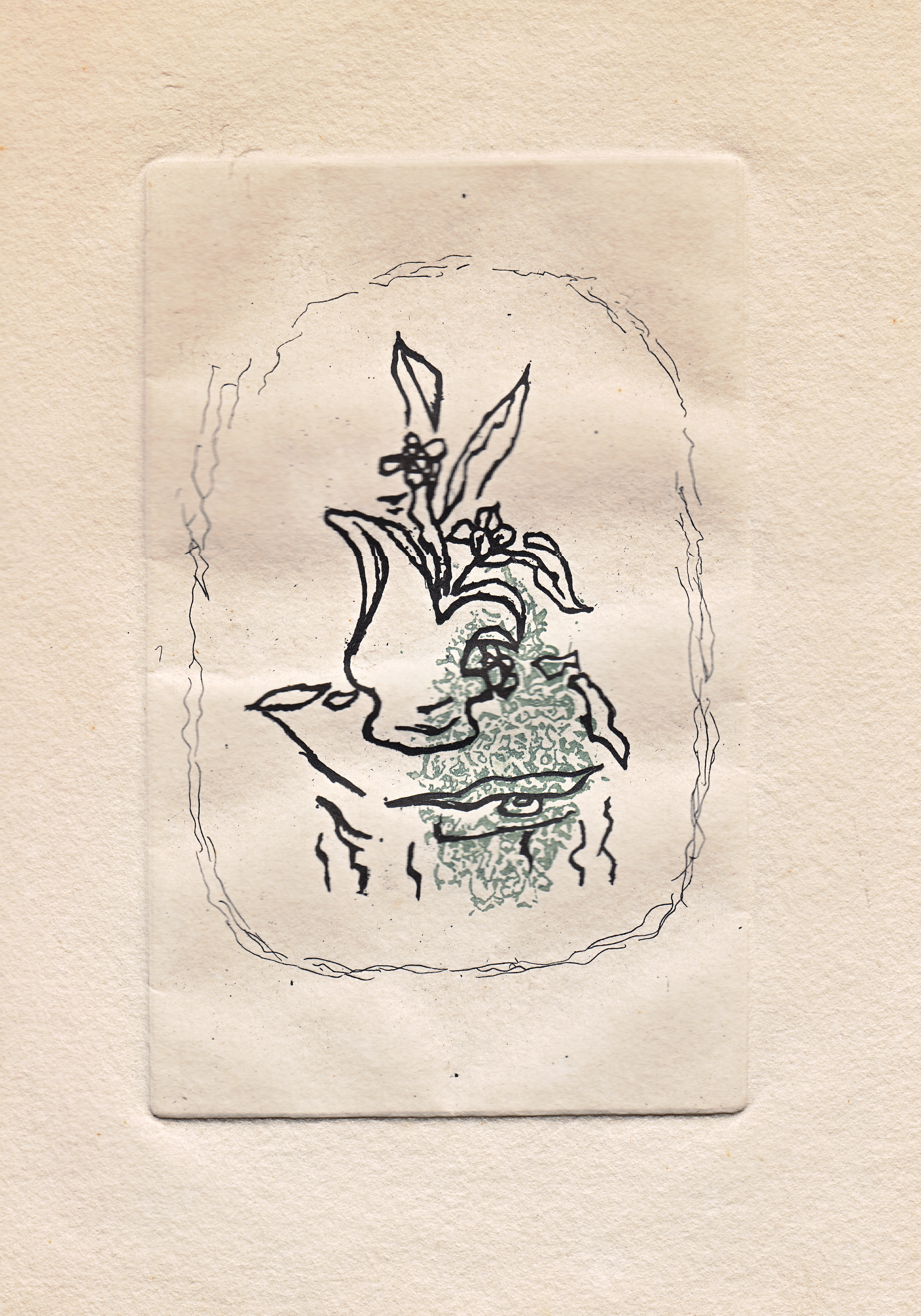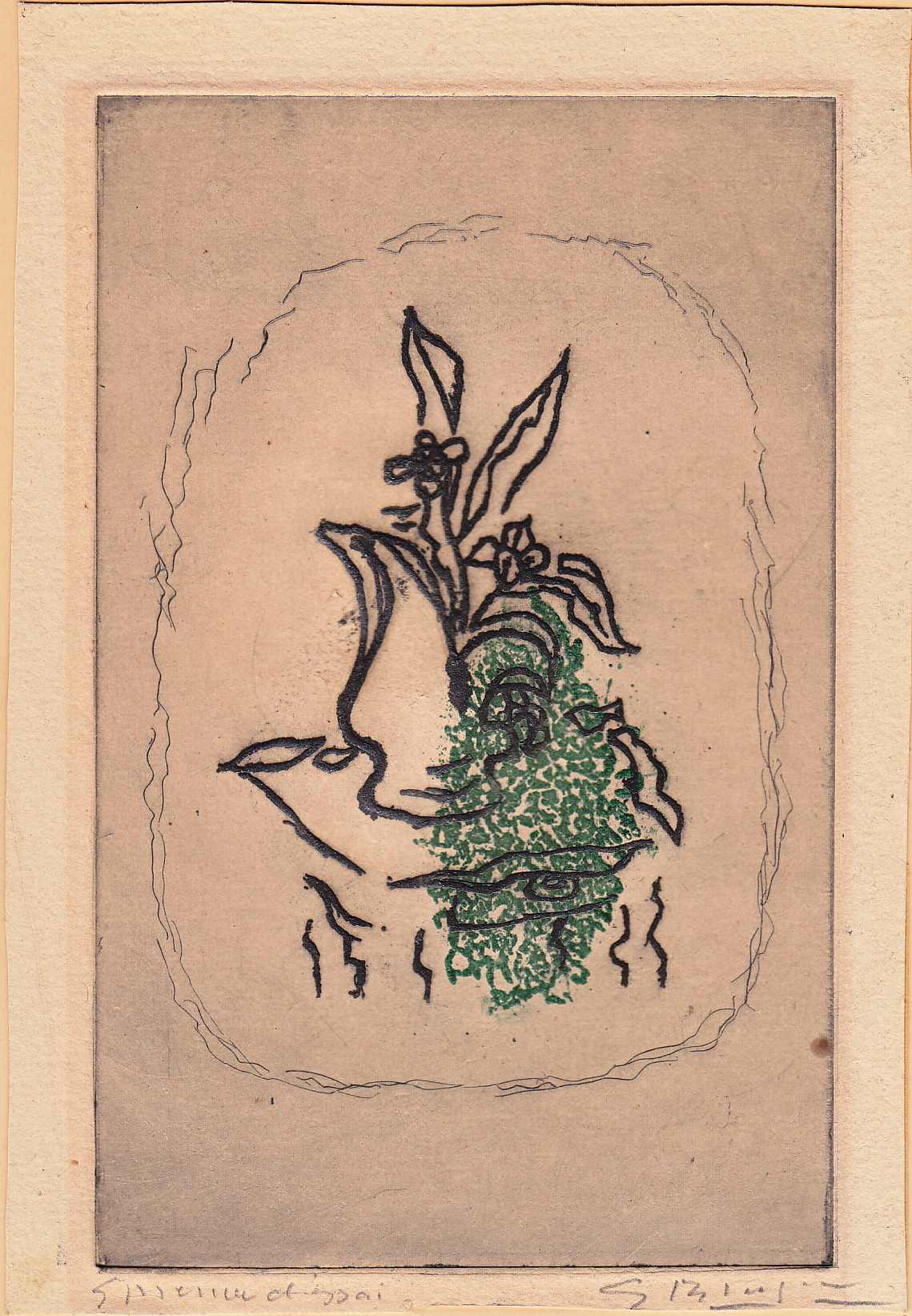
Georges Braque
Georges Braque
 |
 |
Bouquet Vert
[Green Bouquet]
Vallier 70
etching and aquatint in
two colours (black for the keyplate and green for the hanging foliage),
1951, two rare undescribed trial proofs before the sole Maeght edition of 30 impressions
The first proof, on medium-thick absorbent handmade Auvergne paper, the aquatint printed in light greyish-green, before rework for the published state, a very fine trial impression with full margins, the registration marks still visible, very slight and uniform light-staining from an old mount, with deckle edges, two short strips of tape on the upper and lower edges, verso, otherwise in quite excellent condition.
The second
proof, on heavy cream laid paper, with the aquatint rework on the
hanging foliage, a very fine trial impression with narrow irregular
margins, and slight crimping below, some lightstaining from an old
mount, signed and annotated "Epreuve d'essai" by the artist in the lower margin, a rich veil of plate tone, some atelier soiling and inky fingerprints, as well as
two old hinges, verso, overall in rather good condition.
P. 180 x 115 mm., S. 305 x 245 mm.
P. 185x117 S 208x144 mm.
Provenance: a private Parisian collection
